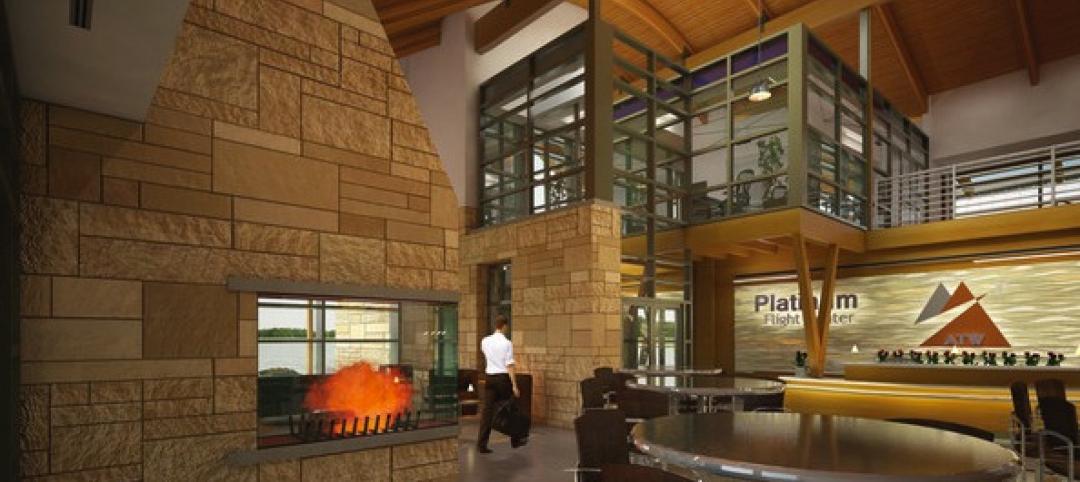Construction costs in North America rose for the 22nd consecutive month in November as labor costs continued to increase, amid growing industry concern over the tight availability of skilled workers.
The Engineering and Construction Cost Index (ECCI) registered 53.2 percent in November, up from 52.6 percent in October, according to IHS Inc. (NYSE: IHS) and the Procurement Executives Group (PEG). The ECCI indicates that construction costs in North America have been on the rise for nearly two years since January 2012.
The attached figure presents the monthly results of the ECCI. A number higher than 50 indicates a monthly increase in prices paid, while a reading lower than 50 shows a price decline.
The index divides construction costs into two major categories: materials/equipment and subcontractor labor. With the materials/equipment portion of the index hovering near 50 since April, it was the labor segment that drove the increase for the month.
The current subcontractor labor index climbed to 58.5 percent, up from 56.4 percent last month, with the strongest gains in November concentrated in Western Canada as well as in the southern and western regions of the United States.
Shale shock
The shale gas boom in the United States is playing a major role in driving increased spending on construction and rising costs for associated labor in North America.
“Labor concerns have been reported in the U.S. Gulf Coast, where demand from new downstream energy projects is expected to increase,” said Laura Hodges, director of the pricing and purchasing service at IHS. “Some in the industry are even suggesting shortages of skilled laborers such as welders and pipefitters in 2014 because of increasing investment in such projects.”
For several years, materials costs were the major factor driving up expenses for North American construction firms, as China’s economic boom ate up the available global supply. However, as China’s growth has slowed, the focus has shifted from materials to labor.
North American construction companies now say their main concern is the continued increase in labor costs. With U.S. spending on construction on the rise and skilled workers aging, the availability of skilled laborers is likely to become tighter.
While costs for these skilled laborers are on the increase, the wage inflation is not likely to climb as high as it did in 2007, when a strong U.S. economy spurred double-digit annual pay increases for these skilled areas. This is largely because the strength of the U.S. economy is not as uniform as it was 2007 and employers are investing in training and mentoring programs to be prepared for this next wave of activity.
The material world
Looking at the material/equipment segment of the ECCI, November recorded the seventh consecutive month of falling prices for carbon steel pipe and a fourth month of declining freight rates between Asia and the United States. Copper-based wire and cable and fabricated structural steel also joined the ranks of falling prices in November and moved below the 50-percent threshold.
About the ECCI
The IHS/PEG Engineering and Construction Cost Index (ECCI) is a diffusion index based on data independently obtained and compiled by IHS from the procurement executives of leading engineering, procurement, and construction firms. The headline index tracks industry-specific trends and variations, identifying market turning points for key projects, and is intended to act as a leading indicator for wage and material inflation specific to this industry.
Each survey response is weighted equally for every $2 billion in spending in North America. Respondents are asked whether prices—either actual paid transactions or company-informed transactions—during the current month for individual materials, equipment, and regional subcontractor rates, were higher, lower or the same as the prior month.
Respondents are then asked for their six-month pricing expectations among these same subcategories. The results are compiled into diffusion indexes, in which a reading greater than 50 represents upward pricing strength and a reading below 50 represents downward pricing strength.
Related Stories
| Oct 18, 2013
Researchers discover tension-fusing properties of metal
When a group of MIT researchers recently discovered that stress can cause metal alloy to fuse rather than break apart, they assumed it must be a mistake. It wasn't. The surprising finding could lead to self-healing materials that repair early damage before it has a chance to spread.
| Sep 30, 2013
Smart building systems key to new Wisconsin general aviation terminal’s net zero target
The Outagamie County Regional Airport’s new 8,000 sf general aviation terminal was designed to achieve net zero.
| Sep 19, 2013
What we can learn from the world’s greenest buildings
Renowned green building author, Jerry Yudelson, offers five valuable lessons for designers, contractors, and building owners, based on a study of 55 high-performance projects from around the world.
| Sep 19, 2013
6 emerging energy-management glazing technologies
Phase-change materials, electrochromic glass, and building-integrated PVs are among the breakthrough glazing technologies that are taking energy performance to a new level.
| Sep 11, 2013
BUILDINGChicago eShow Daily – Day 3 coverage
Day 3 coverage of the BUILDINGChicago/Greening the Heartland conference and expo, taking place this week at the Holiday Inn Chicago Mart Plaza.
| Sep 10, 2013
BUILDINGChicago eShow Daily – Day 2 coverage
The BD+C editorial team brings you this real-time coverage of day 2 of the BUILDINGChicago/Greening the Heartland conference and expo taking place this week at the Holiday Inn Chicago Mart Plaza.
| Aug 30, 2013
Local Government Report [2013 Giants 300 Report]
Building Design+Construction's rankings of the nation's largest local government design and construction firms, as reported in the 2013 Giants 300 Report.
| Aug 30, 2013
State Government Report [2013 Giants 300 Report]
Stantec, Jacobs, PCL Construction among nation's top state government design and construction firms, according to BD+C's 2013 Giants 300 Report.
| Aug 28, 2013
Federal Government Report [2013 Giants 300 Report]
Building Design+Construction's rankings of the nation's largest federal government design and construction firms, as reported in the 2013 Giants 300 Report.
| Aug 26, 2013
What you missed last week: Architecture billings up again; record year for hotel renovations; nation's most expensive real estate markets
BD+C's roundup of the top construction market news for the week of August 18 includes the latest architecture billings index from AIA and a BOMA study on the nation's most and least expensive commercial real estate markets.

















